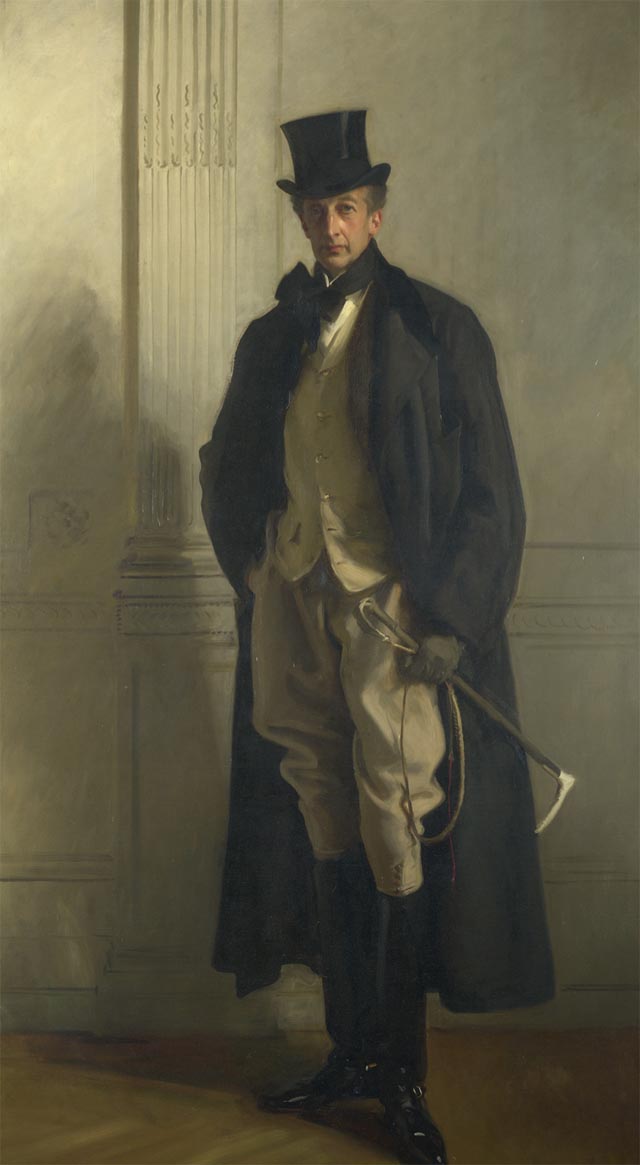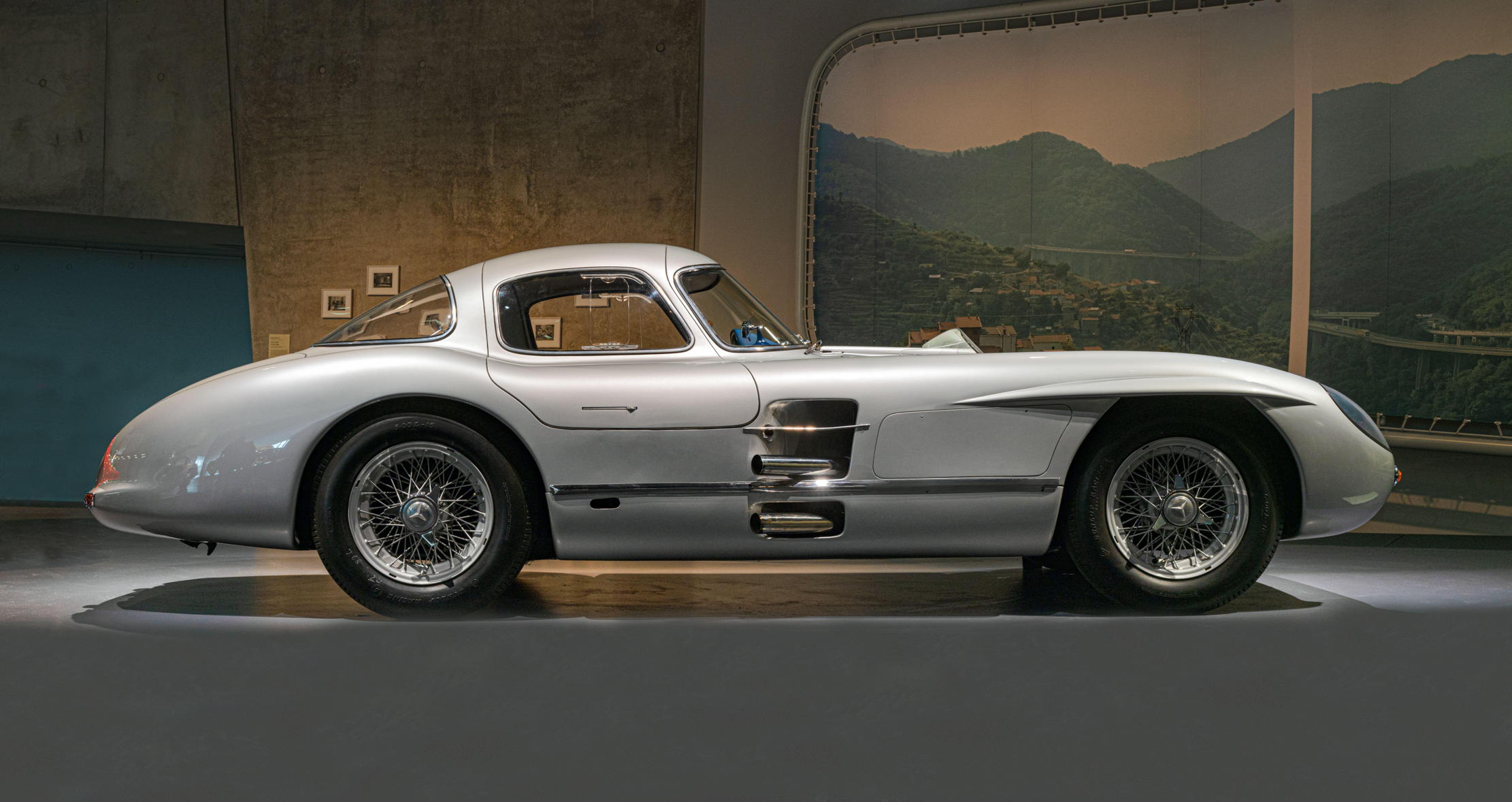My favourite painting: David Starkey
David Starkey shares the one painting he would own, if he could


Lord Ribblesdale, 1902, by John Singer Sargent RA (1856–1925), 101¾in by 56½in, The National Gallery
David Starkey says: If I could own one great painting, this would be it. I am fortunate enough to have a fine contemporary copy of Sargent’s portrait of the Victorian poet Coventry Patmore Cooper, which was painted at about the same time and shares the same angular, elongated format and black-and-white palette, like a super-size Japanese print.
But Lord Ribblesdale is of a different order. Capturing the quintessence of understated aristocratic style, it’s the portrait of an age as well as the man. It’s a historian’s dream. Thank heavens it’s an impossible one as I would also need a house with 20ft-high ceilings to accommodate it comfortably!
David Starkey is a historian and broadcaster. His latest book, Magna Carta: The True Story Behind the Charter, was published in April
John McEwen comments:
Richard Ormond’s three volumes devoted to the 700 portraits by his great-uncle show what an avalanche of commissions Sargent had to contend with as the most fashionable portraitist of his time. In 1902, Rodin voiced the general opinion that he was ‘le Van Dyck de l’epoque’.
It was a reputation the artist found increasingly irksome. That same year, he told a friend: ‘It will be great fun to do some nudes instead of frock-coated bank presidents.’ And soon, he relinquished portraiture for more imaginative work. Lord Ribblesdale was the reverse of the norm. Sargent proposed the portrait. Thomas Lister, 4th Baron Ribblesdale (1854–1925), was, among other things, Liberal whip in the House of Lords, lord-in-waiting to Queen Victoria and, for many years, Master of the Queen’s Buckhounds, but, above all, he was renowned for his style, charm and good looks.
Sign up for the Country Life Newsletter
Exquisite houses, the beauty of Nature, and how to get the most from your life, straight to your inbox.
He preferred to ‘wear mufti [‘ratcatcher’] when hunting’, as here, and was famed for his foppish black ‘butterfly’ muffler, worn to one side, and was ‘a stickler for the tall hat’, which he considered ‘best for riding of all kinds, which includes falling off’. The portrait was first exhibited at the Paris Salon, its subject hailed as the embodiment of patrician manners and style. When Ribblesdale visited, he was immediately recognised and ‘followed by an embarrassingly large crowd’.
He was a trustee of the National Gallery, so it is appropriate that his portrait once hung in its central hall before being moved to the Barry Rooms. It is now on display at the Minneapolis Institute of Art as part of the ‘Delacroix and the Rise of Modern Art’ exhibition, with which it will return to the National Gallery in February 2016. His style, charm and good looks found glorious fruition when his similarly blessed grandson, Brig Lord Lovat, led 1st Commando Brigade with legendary panache on D-Day.
Country Life is unlike any other magazine: the only glossy weekly on the newsstand and the only magazine that has been guest-edited by HRH The King not once, but twice. It is a celebration of modern rural life and all its diverse joys and pleasures — that was first published in Queen Victoria's Diamond Jubilee year. Our eclectic mixture of witty and informative content — from the most up-to-date property news and commentary and a coveted glimpse inside some of the UK's best houses and gardens, to gardening, the arts and interior design, written by experts in their field — still cannot be found in print or online, anywhere else.
-
 Jungle temples, pet snakes and the most expensive car in the world: Country Life Quiz of the Day, April 14, 2025
Jungle temples, pet snakes and the most expensive car in the world: Country Life Quiz of the Day, April 14, 2025Mondays's quiz tests your knowledge on English kings, astronomy and fashion.
By James Fisher Published
-
 Welcome to the modern party barn, where disco balls are 'non-negotiable'
Welcome to the modern party barn, where disco balls are 'non-negotiable'A party barn is the ultimate good-time utopia, devoid of the toil of a home gym or the practicalities of a home office. Modern efforts are a world away from the draughty, hay-bales-and-a-hi-fi set-up of yesteryear.
By Annabel Dixon Published
-
 'As a child I wanted to snuggle up with the dogs and be part of it': Alexia Robinson chooses her favourite painting
'As a child I wanted to snuggle up with the dogs and be part of it': Alexia Robinson chooses her favourite paintingAlexia Robinson, founder of Love British Food, chooses an Edwin Landseer classic.
By Charlotte Mullins Published
-
 The Pre-Raphaelite painter who swapped 'willowy, nubile women' for stained glass — and created some of the best examples in Britain
The Pre-Raphaelite painter who swapped 'willowy, nubile women' for stained glass — and created some of the best examples in BritainThe painter Edward Burne-Jones turned from paint to glass for much of his career. James Hughes, director of the Victorian Society, chooses a glass masterpiece by Burne-Jones as his favourite 'painting'.
By Charlotte Mullins Published
-
 'I can’t look away. I’m captivated': The painter who takes years over each portrait, with the only guarantee being that it won't look like the subject
'I can’t look away. I’m captivated': The painter who takes years over each portrait, with the only guarantee being that it won't look like the subjectFor Country Life's My Favourite Painting slot, the writer Emily Howes chooses a work by a daring and challenging artist: Frank Auerbach.
By Toby Keel Published
-
 My Favourite Painting: Rob Houchen
My Favourite Painting: Rob HouchenThe actor Rob Houchen chooses a bold and challenging Egon Schiele work.
By Charlotte Mullins Published
-
 My Favourite Painting: Jeremy Clarkson
My Favourite Painting: Jeremy Clarkson'That's why this is my favourite painting. Because it invites you to imagine'
By Charlotte Mullins Published
-
 The chair of the National Gallery names his favourite from among the 2,300 masterpieces — and it will come as a bit of a shock
The chair of the National Gallery names his favourite from among the 2,300 masterpieces — and it will come as a bit of a shockAs the National Gallery turns 200, the chair of its board of trustees, John Booth, chooses his favourite painting.
By Toby Keel Published
-
 'A wonderful reminder of what the countryside could and should be': The 200-year-old watercolour of a world fast disappearing
'A wonderful reminder of what the countryside could and should be': The 200-year-old watercolour of a world fast disappearingChristopher Price of the Rare Breed Survival Trust on the bucolic beauty of The Magic Apple Tree by Samuel Palmer, which he nominates as his favourite painting.
By Charlotte Mullins Published
-
 My favourite painting: Andrew Graham-Dixon
My favourite painting: Andrew Graham-Dixon'Lesson Number One: it’s the pictures that baffle and tantalise you that stay in the mind forever .'
By Country Life Published